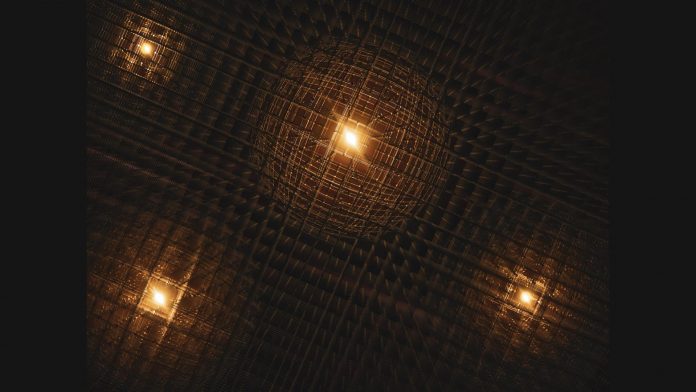Scientists at the Department of Energy’s SLAC National Accelerator Laboratory and Stanford University, USA, have, for the first time, used an X-ray laser to observe and directly measure the formation of polarons.
Polarons are distortions in a material’s atomic lattice that form around a moving electron in a few trillionths of a second, then quickly disappear. Although polarons are temporary, they affect a material’s behaviour, and could be responsible for lead hybrid perovskites solar cells being so efficient in the laboratory.
Aaron Lindenberg, an investigator with the Stanford Institute for Materials and Energy Sciences (SIMES) at SLAC and associate professor at Stanford who led this new research, said: “These materials have taken the field of solar energy research by storm because of their high efficiencies and low cost, but people still argue about why they work.
“The idea that polarons may be involved has been around for a number of years. But our experiments are the first to directly observe the formation of these local distortions, including their size, shape and how they evolve.”
Previous studies at SLAC examined the nature of perovskites using X-ray beams. Among other findings, the team revealed that light whirls atoms around in perovskites, and they also measured the lifetimes of acoustic phonons – sound waves – that carry heat through the materials.
Capturing atomic motions of polarons
For this study, the findings of which are published in Nature Materials, Lindenberg’s team used the lab’s Linac Coherent Light Source (LCLS), a powerful X-ray free-electron laser that can image materials in near-atomic detail and capture atomic motions occurring in millionths of a billionth of a second. They looked at single crystals of the material synthesised by Associate Professor Hemamala Karunadasa’s group at Stanford.
The team hit a small sample of the material with light from an optical laser and then used the X-ray laser to observe how the material responded over the course of tens of trillionths of a second.
Burak Guzelturk, a scientist at DOE’s Argonne National Laboratory who was a postdoctoral researcher at Stanford at the time of the experiments, said: “When you put a charge into a material by hitting it with light, like what happens in a solar cell, electrons are liberated, and those free electrons start to move around the material. Soon they are surrounded and engulfed by a sort of bubble of local distortion – the polaron – that travels along with them. Some people have argued that this ‘bubble’ protects electrons from scattering off defects in the material and helps explain why they travel so efficiently to the solar cell’s contact to flow out as electricity.”
Their observations revealed that polaronic distortions start very small – on the scale of a few angstroms, about the spacing between atoms in a solid – and rapidly expand outward in all directions to a diameter of about 5 billionths of a metre, which is about a 50-fold increase. This nudges about 10 layers of atoms slightly outward within a roughly spherical area over the course of tens of picoseconds, or trillionths of a second.








